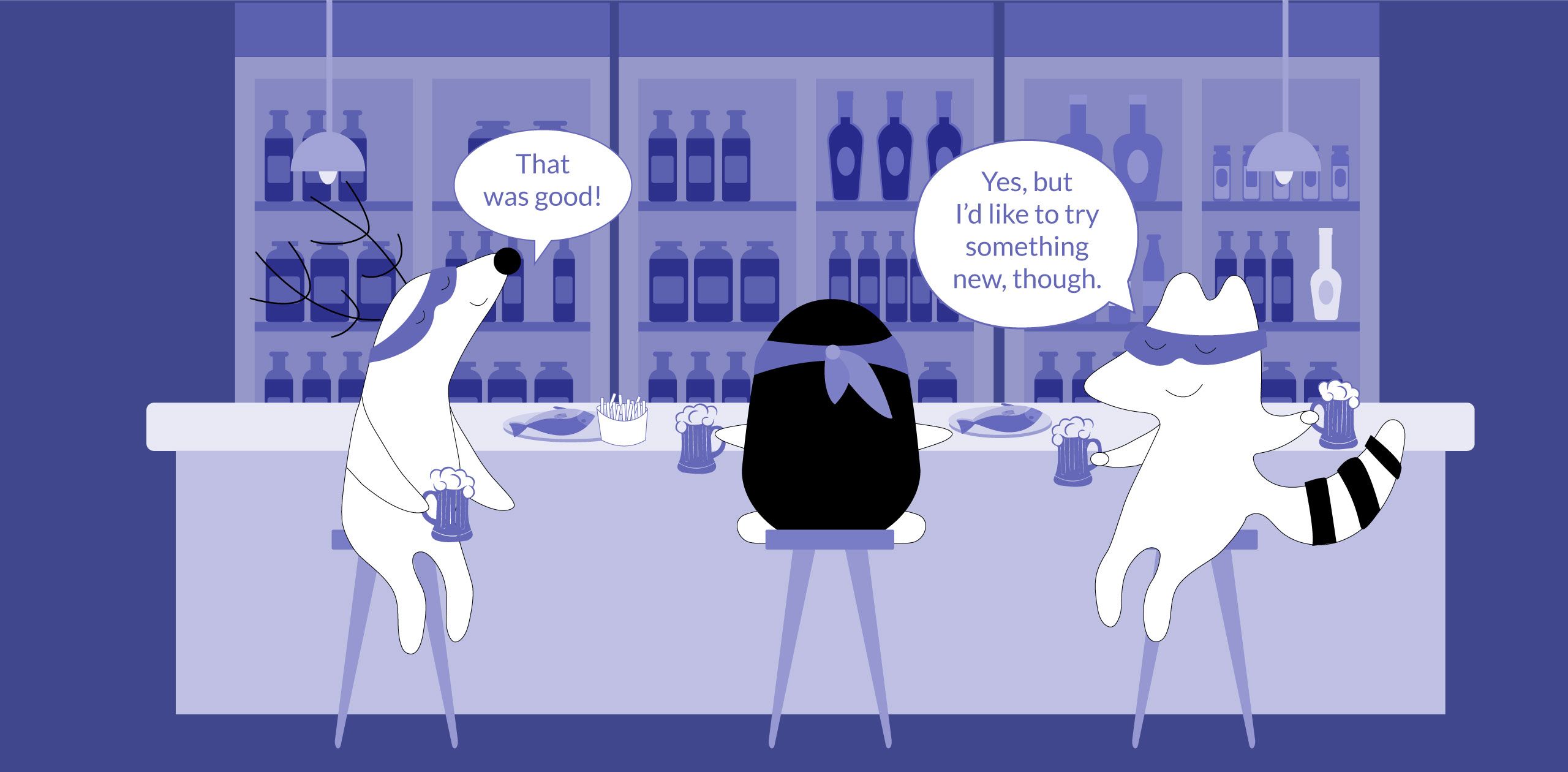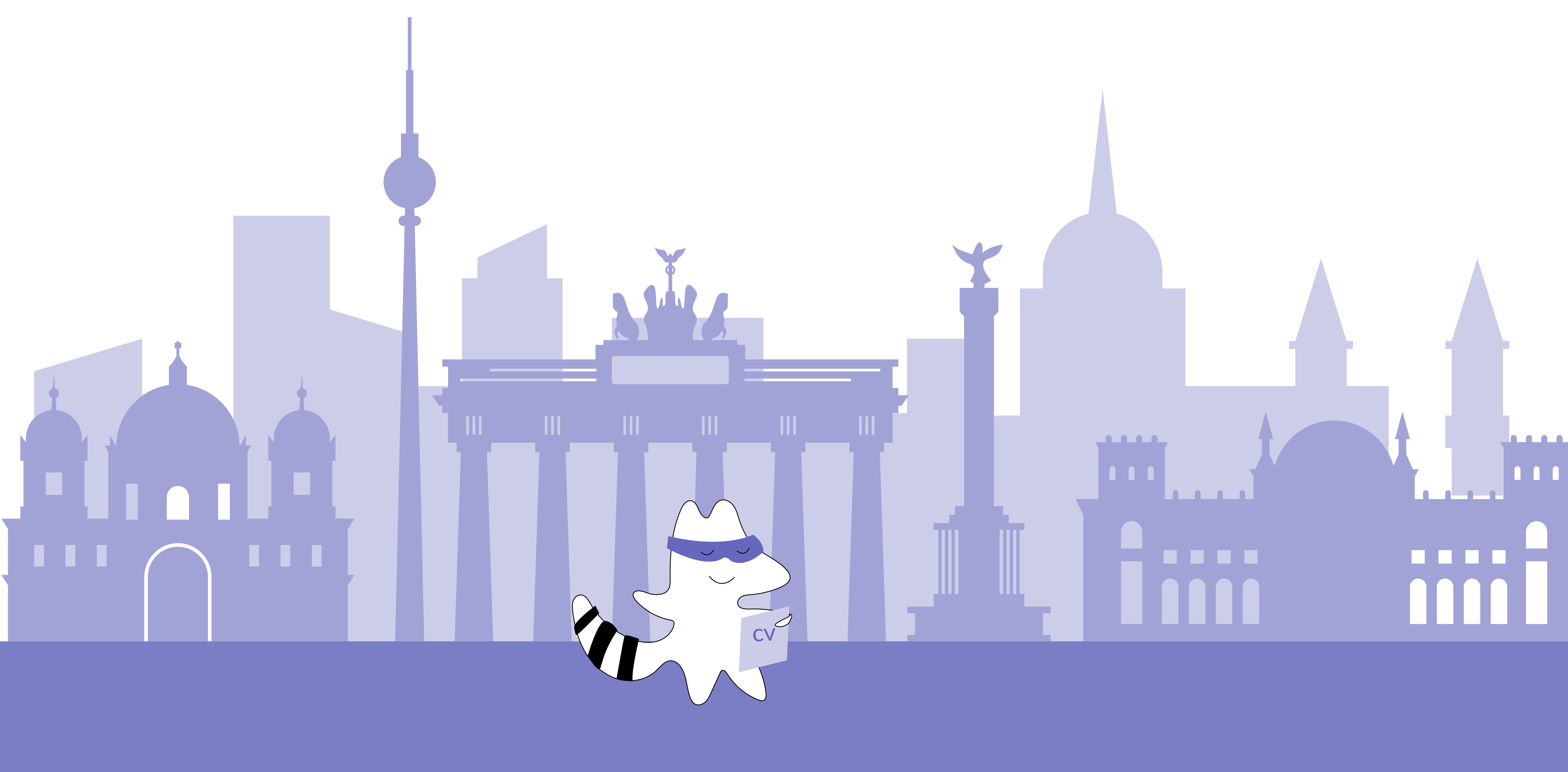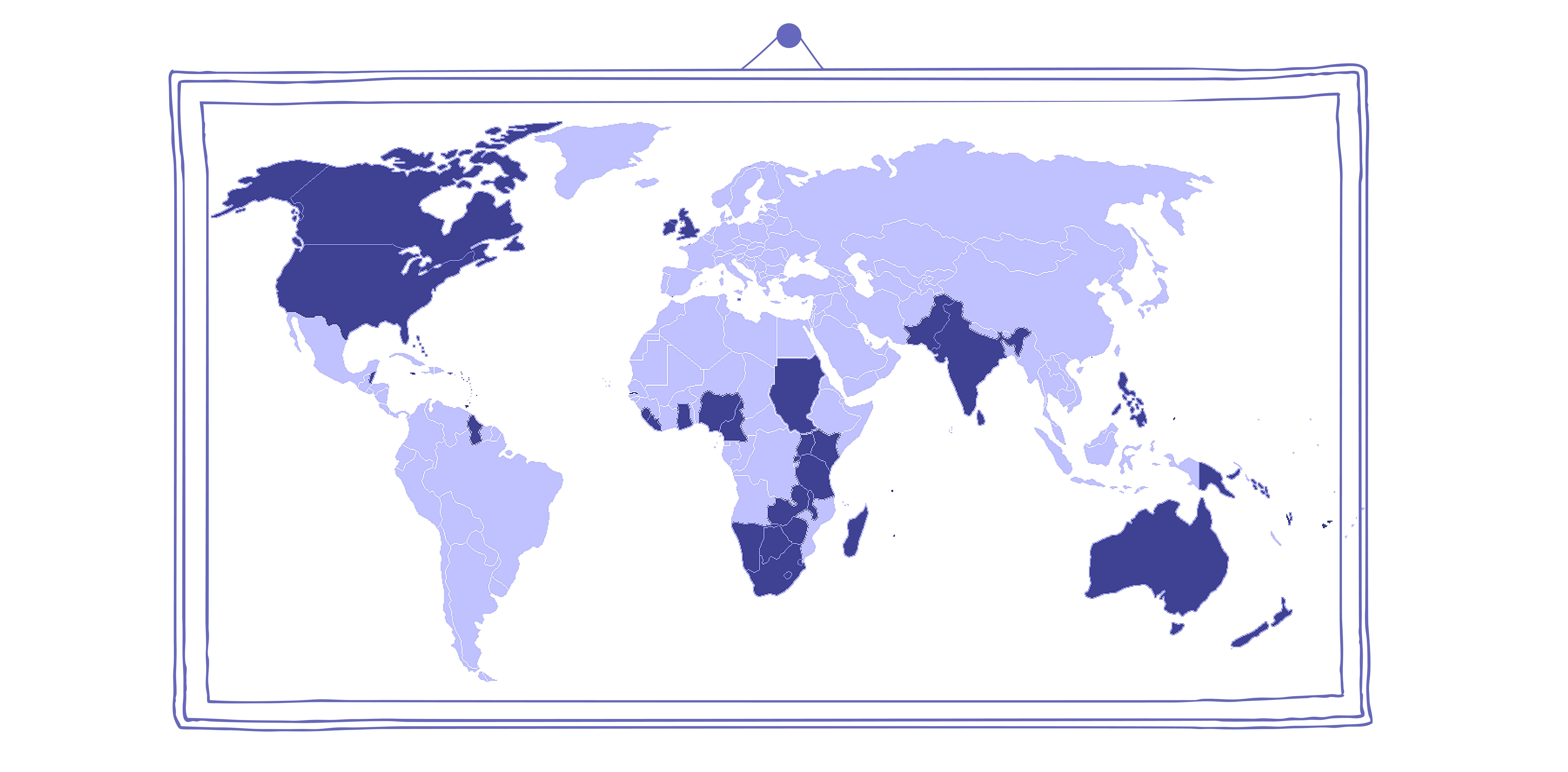
There is no definitive answer to the question of what the most spoken language in the world is. The diversity of languages spoken across the globe makes it difficult to determine a single language that can claim this title once and for all.
As of today, the answer would be Mandarin Chinese or English, depending on whether we’re counting the number of native-speakers (1,138 billion for Mandarin Chinese) or total-speakers (1,456 billion for English).
However, compiling a list of the top 10 most spoken languages in the world (based on specific criteria) can be a worthwhile ordeal, as it might help you to choose your next language to learn. After all, most language learners choose either the easiest language or the most widely spoken one.
In this article, we focus on the top 10 languages by the current total number of speakers (meaning this list includes both first-language speakers and non-native speakers), according to data from Ethnologue — the research center for language intelligence.
We will explore each of these languages in separate sections, briefly discussing their origins, history, current usage, and importance in today's world. Let’s dive in!
Learn English with Langster
English (1,456 Billion Speakers)
380 Million Native Speakers
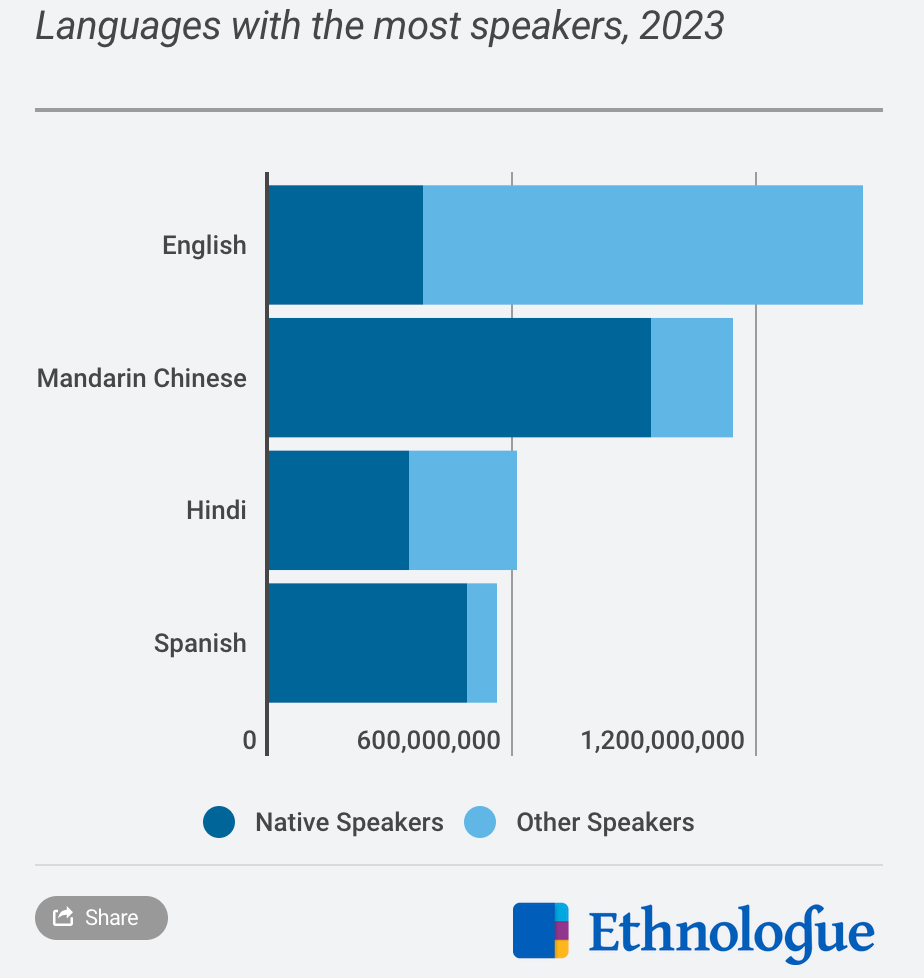
English is currently the most widely spoken language in the world by total number of speakers, with around 1,456 people who speak it as their first or second language. It is also the primary language of international business and communication, making it a lingua franca for many countries.
English originated from Germanic languages spoken by Anglo-Saxon inhabitants of what is now England around the 5th century. It then evolved and spread due to colonialism, trade, and globalization.
Today, English is the official language of 67 different countries and 27 non-sovereign entities around the world — and one of the six official languages of the United Nations (the rest of them you will also find on this list). It is widely used in education, science, technology, entertainment, and media.
Its influence on culture and communication can be seen in its widespread use as a language for diplomacy and its dominance in the global internet space.
Mandarin Chinese (1,139 Billion Speakers)
940 Million Native Speakers
Mandarin Chinese, also known as Standard Chinese or Modern Standard Chinese, is the second most spoken language in the world, with approximately 1,139 billion native and non-native speakers.
It originated from a northern dialect of Old Chinese, which was used during the Zhou dynasty (1046–256 BCE). It then became standardized during the Qin dynasty (221–206 BCE) and has continued to evolve over time.
Today, Mandarin Chinese is the official language of China, Taiwan, and Singapore. It is also one of the six official languages used in the United Nations. Its importance in global trade and business has increased in recent years due to China's economic growth.
Hindi (610 Million Speakers)
345 Million Native Speakers
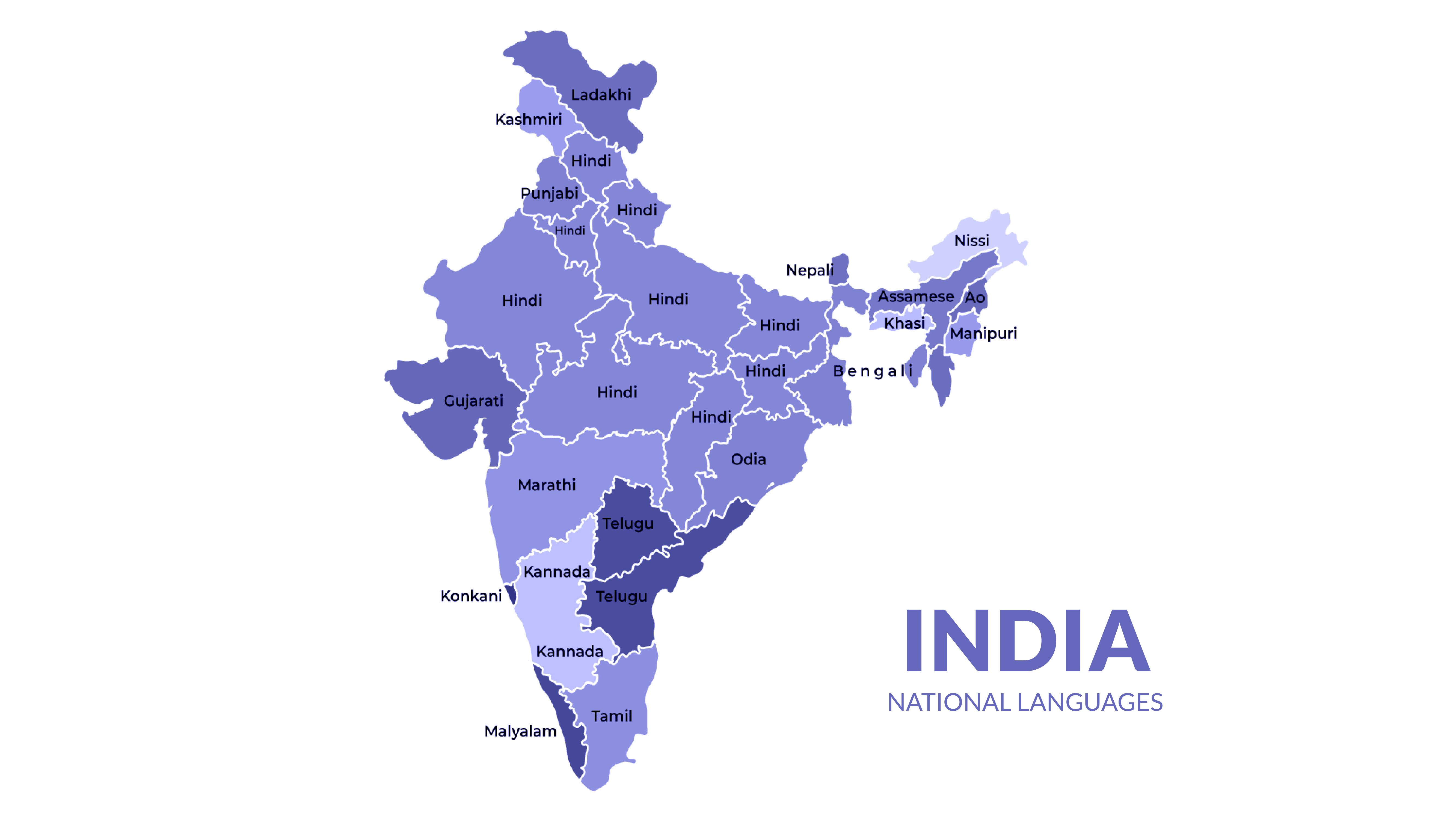
Hindi ranks third on the list, with over 600 million speakers, and is predominantly spoken in Northern regions of India. Despite this fact, you might be surprised to learn that India does not have a national language.
In 1950, the Indian constitution officially recognized Hindi, written in the Devanagari script, as the union's official language. It was initially planned that English would cease to be used for official purposes 15 years after the constitution came into effect, i.e., on January 26, 1965, unless an alternative decision was taken by Parliament.
However, the proposed language shift generated significant apprehension in India's non-Hindi-speaking regions, especially in the Dravidian-speaking states, where languages bore no relation to Hindi. Consequently, Parliament passed the Official Languages Act of 1963, which ensured the continued use of both Hindi and English for official purposes beyond 1965.
Hindi evolved from Sanskrit, an ancient Indo-Aryan language, and has been influenced by various dialects over time. It also shares many similarities with other Indian languages, such as Urdu and Bengali — both being widely spoken languages on their own, they also ended up on this list.
In addition to its widespread usage in India, Hindi is also spoken in other countries with large Indian diasporas, including Nepal, Mauritius, and Fiji — however, none of them give it the status of a national language. Its influence on culture can be seen in the popularity of Bollywood films and Hindi literature.
Spanish (595 Million Speakers)
496 Million Native Speakers
Spanish has approximately 595 million speakers and is the fourth most spoken language in the world. It originated from Latin and evolved during the expansion of the Roman Empire.
Today, it is the official language of 20 countries, mainly in Latin America and Spain, and one dependent territory.
Spanish has also been influenced by Arabic, as well as indigenous languages from South America. It is widely used in international diplomacy and is an important language for trade, tourism, and cultural exchange.
French (321 Million Speakers)
220 Million Native Speakers

French ranks fifth with over 320 million speakers across the globe.
It originated from Vulgar Latin, which was spoken by Gauls in ancient Rome and evolved over time. French is the official language of France and 29 countries in Africa, in addition to Canada and some European countries.
It has also had a significant influence on other languages, particularly English. Many words commonly used in English today have French origins. French culture is also renowned for its literature, fashion, cuisine, and art.
Standard Arabic (274 Million Speakers)
Taking into account all the diverse forms of Arabic that are spoken today, it's a reasonable estimate that there are approximately 313 million Arabic speakers globally.
Standard Arabic, also known as Modern Standard Arabic (MSA), is the sixth most spoken language in the world, although according to Ethnologue, there are no native speakers of Modern Standard Arabic — rather, a total of 274 million second-language speakers in the world.
This is because MSA is the official language used in schools, official papers, news, and many other formal settings, but comes off as too official, too strict, and too old for daily usage. As such, in everyday conversations, people often use their own local Arabic dialects.
It originated from Classical Arabic and is considered to be a prestigious form of the language. It is widely used in religious texts, literature, media, and education across the Arab world. Its influence on culture can be seen in its importance as a language for Islamic religious practices and in the spread of Arabic music and cuisine.
However, it's important to note that for Arabic-speaking individuals, there isn't typically a distinction made between Modern Standard Arabic and Classical Arabic. Instead, they view both as different periods in the history of the same language, often referring to both as al-ʻArabīyah al-Fuṣḥā (العربية الفصحى), which translates to "the eloquent Arabic."
Bengali (270 Million Speakers)
234 Million Native Speakers
Bengali has around 270 million speakers and is predominantly spoken in Bangladesh and India. It originated from Sanskrit and evolved over time, incorporating influences from Persian, Portuguese, English, and other languages.
Bengali is the official language of Bangladesh and one of the 22 scheduled languages of India. It is also widely used in the arts, especially in literature and music. Its influence can be seen in the popularity of Bengali film and television industries.
Portuguese (258 Million Speakers)
232 Million Native Speakers
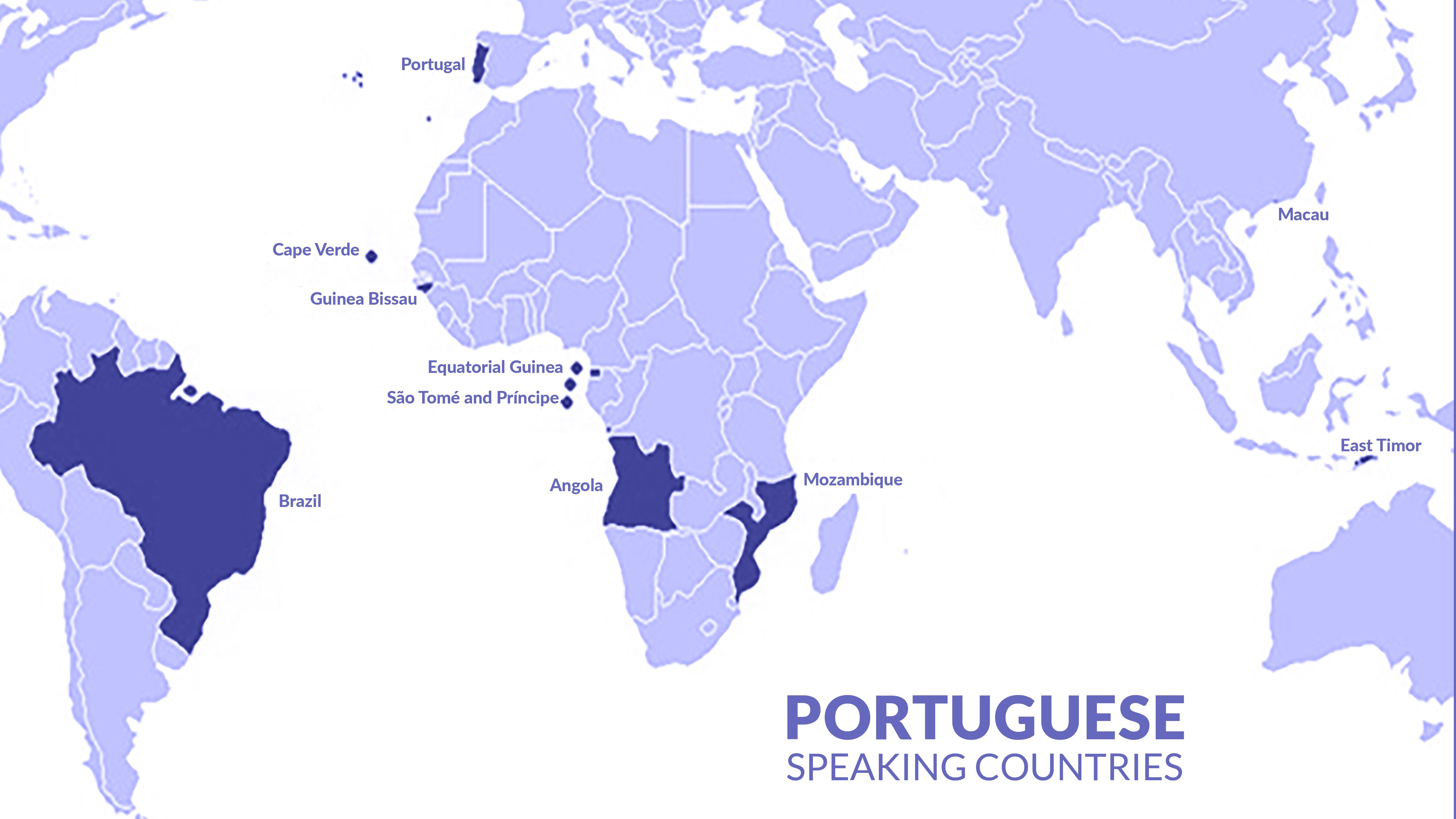
Portuguese has approximately 258 million speakers and is the eighth most-spoken language in the world. It originated from Vulgar Latin and evolved due to colonization, trade, and cultural exchange.
It is the official language of Portugal, Brazil, Angola, Mozambique, and other countries in Africa and Asia. Its influence on culture can be seen in its rich literature and music traditions, as well as its widespread use in international relations, business, and tourism.
Russian (258 Million Speakers)
154 Million Native Speakers
Russian ranks ninth with around 258 million speakers. This approximation might be on the higher end since it considers numerous communities of Russian heritage who may no longer use the language. When accounting solely for individuals for whom Russian is their native language, the figure stands at around 154 million.
Although it has the same number of total speakers as Portuguese, we place it lower due to a lower number of native Russian speakers.
Russian originated from the Old East Slavic language spoken by medieval Russians and evolved over time through influences from other Slavic languages. Today, it is the official language of Russia, Belarus, Kazakhstan, and Kyrgyzstan. It is also among the most widely spoken languages in other countries with significant Russian-speaking populations.
Its importance in global affairs is highlighted by being one of the six official languages of the United Nations.
Urdu (230 Million Speakers)
70 Million Native Speakers
Urdu ranks tenth on the list, with around 230 million total speakers. It originated from Persian and Arabic and evolved over time due to cultural influences from Indian languages.
Urdu is one of the official languages of Pakistan, and it is spoken in India and other countries with significant Muslim populations. Its influence on culture can be seen in its usage in poetry, literature, and media in South Asia.
It is also widely used in popular culture through Bollywood films and music. Additionally, it has a strong influence on the Urdu-speaking community's sense of identity and heritage.
Overall, Urdu serves as an important language for communication and cultural expression in South Asia.
Top 10 Languages By Total Number Of Native Speakers
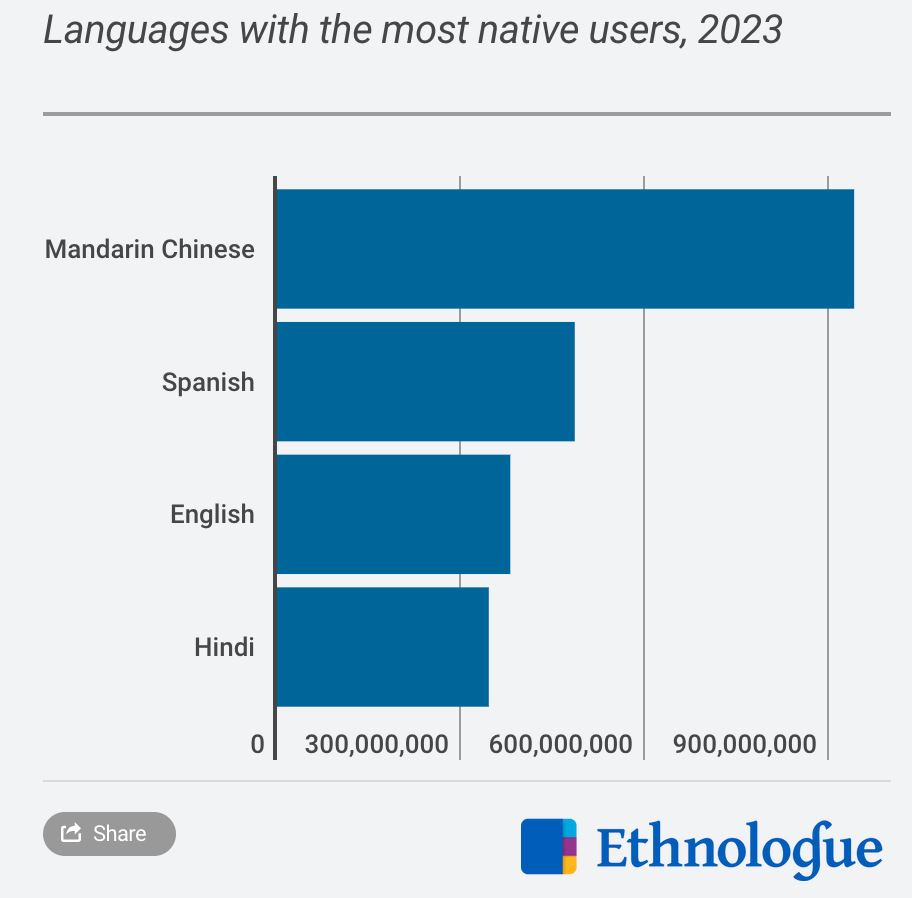
Our planet, home to approximately 8 billion people, is a rich tapestry of diverse cultures conversing in thousands of languages. However, a majority of the global population — around 5 billion people, are native speakers of just 25 languages.
The Ethnologue language catalog from the early 2020s provides an intriguing data set that identifies 25 languages with the highest number of native speakers. The top 10 languages by native speakers are as follows:
- Chinese (1,346,000,000 [Mandarin: 939,237,350]),
- Spanish (485,063,960),
- English (379,682,200),
- Arabic (373,000,000 [Egyptian Arabic: 77,436,230]),
- Hindi (344,650,870),
- Portuguese (236,266,650),
- Bengali (233,808,880),
- Russian (146,954,150),
- Japanese (123,285,670),
- Lahnda (103,000,000 [Western Punjabi: 66,715,480]).
It's important to note that rankings can fluctuate depending on what constitutes a distinct language. For instance, Chinese and Arabic are composed of several spoken variants that may not be mutually intelligible.
In certain instances, these variants are regarded as separate languages, each with considerably fewer speakers. On this basis, Egyptian Arabic — the Arabic variant with the highest number of native speakers — would be ranked below Tamil (18th) in the top 25.
Interestingly, Hindi and Urdu (5th and 20th, respectively) are mutually intelligible when spoken despite divergent writing systems and literary traditions. Furthermore, If they were treated as a single language — Hindustani — it would rank 3rd, surpassing English in terms of native speakers.
National Language vs. Official Language
While reading this article, you should have noticed the terms “national language” and “official language” — you should also know that they are not interchangeable.
Understanding the difference between "national language" and "official language" is crucial when discussing global languages and their statuses in various countries.
A "national language" refers to a language that has a strong connection to a country's national identity, often through historical, cultural, or societal ties. It may not necessarily be the language of government or education, but it is widely spoken and deeply ingrained in the nation's identity.
In addition, such a language can be afforded some protection by the government that has so designated it, along with some measures that may be enacted to promote its use in society.
On the other hand, an "official language" is a language that has been given a special legal status by a country's constitution or laws. It is typically the language used in government administration and legal proceedings. It is also commonly used in education, media, and other official contexts.
However, an official language is not always the most widely spoken language in a country, and a country can have more than one official language.
In some countries, the national language and the official language may be the same. In others, they may differ, reflecting the linguistic diversity and history of the country. For instance, in India, Hindi and English are the official languages, but there are several other languages that have national language status due to their cultural and historical significance.
Conclusion
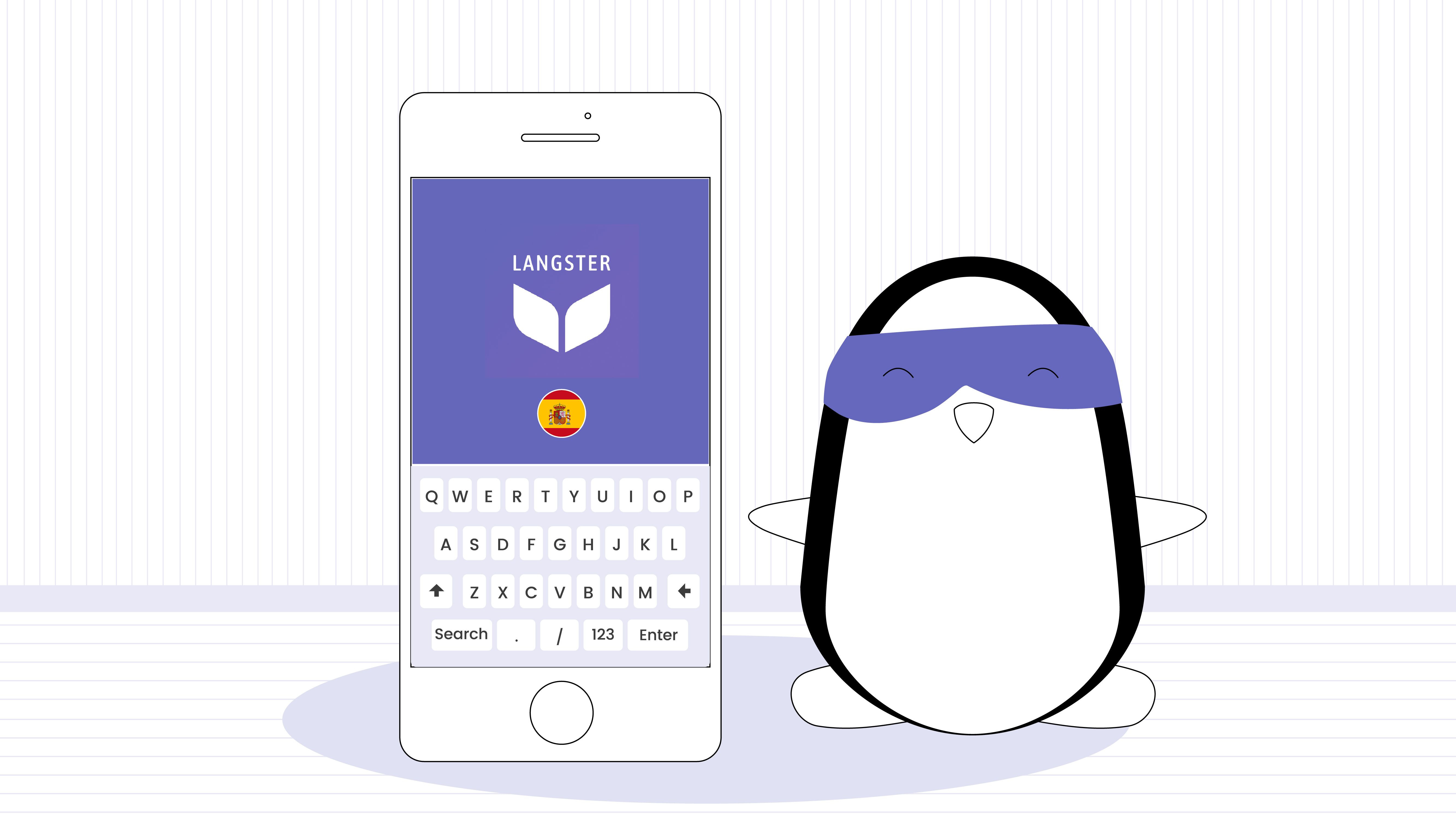
Language is not just a means of communication but also a reflection of one's culture and history. The most spoken languages in the world have all played significant roles in shaping different societies and influencing global cultures. From Mandarin Chinese to Urdu, each language has its unique characteristics and impact on communication, trade, and art.
As the world becomes more interconnected, knowing different languages can open up endless opportunities for cultural understanding and collaboration. So, whether it's for personal enrichment or professional development, improving your language proficiency will always be a valuable investment.
With that in mind, why not start exploring the world through its languages today? The possibilities are endless! For one, you can download our Langster app and start learning English, Spanish, or French with stories. Happy learning!
Learn English with Langster








